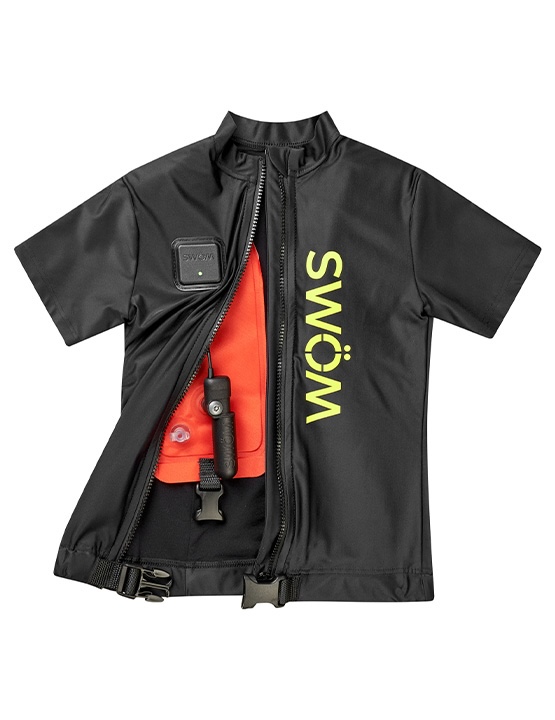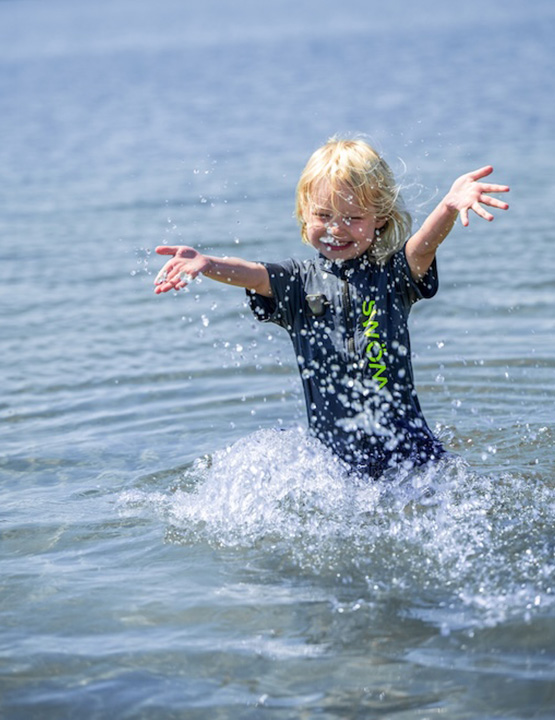As the warmer seasons approach, families flock to water for fun and relaxation. However, water activities come with certain risks, especially for young children who may not always be under constant supervision. According to the World Health Organization, drowning is the third leading cause of death for children aged 5-14, and the fourth for those aged 1-4. Enter SWÖM, a Danish company on a mission to revolutionise water safety for children worldwide. Supported by ESA’s Business Applications and Space Solutions (BASS) programme, SWÖM is developing life-saving swimwear equipped with built-in sensors and satellite technology to ensure children can enjoy the water safely. With SWÖM's innovative swimwear, families will be able to enjoy water activities with peace of mind, knowing their children are protected by cutting-edge technology.


Through the ESA BASS Kickstart Activity, SWÖM has developed groundbreaking water safety device designed for children aged three and up. Traditional buoyancy aids can get in the way of swimming and playing in the water, but SWÖM's innovative swimwear ensures safety without compromising freedom.
Equipped with built-in sensors, the swimwear monitors the child’s position in relation to the depth and time spent under the water’s surface, with a trigger-point for self-inflating technology to bring the child back up to the surface.
Recently featured on the Danish version of the TV show Dragon’s Den, SWÖM's product garnered significant interest and received two offers of investment at a 2.2 million EUR valuation of the company, some of the highest seen on the show. But the founders had set themselves a limit of not accepting less than 2.7million EUR, so walked away without a “Lion” - but not with nothing.
“It was a very positive experience,” said SWÖM’s Chief operations officer Jakob Müller Karstoft. “It raised our profile as a serious company with a great product. And since the show aired, we are now in negotiations with other investors at the level that we wanted.”
The self-inflating swimwear is set to launch this year, with thousands of parents already signed up to buy it in the Nordics. The next phase for the product is to incorporate satellite technology, an alarm system, and a tracking feature to enable a more rapid response in case of emergencies. GNSS technology will provide accurate location data, while a multiple frequency receiver collects data from all satellite’s constellations (GPS, GALILEO, GLONASS, etc) to ensure a reliable and global coverage.
The goal for SWÖM is also to extend the product’s benefits to adults who enjoy water sports such as kayaking, windsurfing, and stand-up paddleboarding.
“The vision is for us to be able to sell this technology on to established swimwear, rash vest and wet suit brands so they can integrate it into their products all over the world – we already have a major brand interested in taking part in the pilot,” said Mr Müller Karstoft.
“Working with ESA has helped us tremendously, scoping what needs to be done and how to construct something that can safely be put inside a consumer product. Our challenges were to make something that is small, that works in water and can meet the rigorous safety standards we must meet under EU’s PPE Directive and product standards. Our product also needs to be user-friendly and cost effective. This is where ESA has been very helpful.”
Davide Coppola, Head of Space Applications Initiatives at ESA, said: “We are really pleased to be able to support projects like this, showcasing the huge breadth of applications space technologies can have in our daily lives and, in this case, saving lives here on Earth."
This collaboration between SWÖM and ESA BASS not only highlights the potential of space technology in everyday applications, but also underscores the importance of innovative solutions in safeguarding lives. Together, they are making waves in the world of water safety, ensuring that everyone can enjoy the water with peace of mind.


